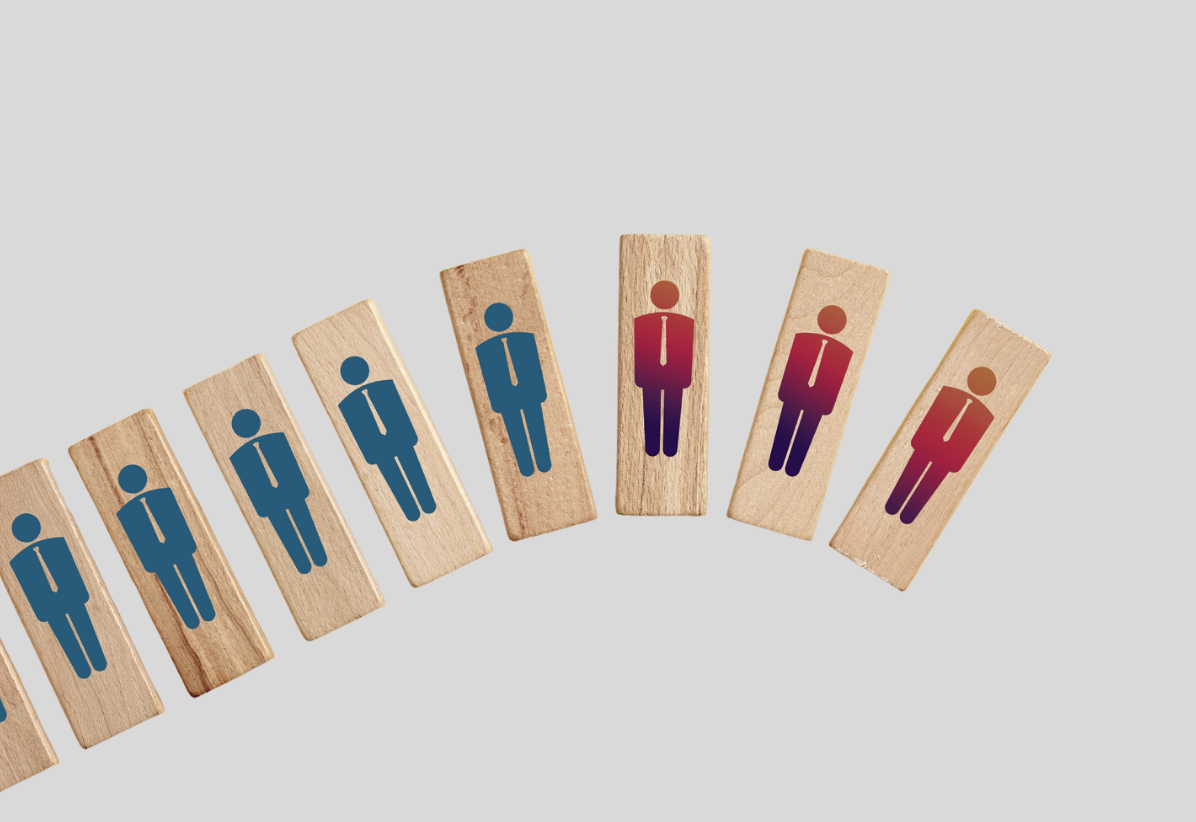5 Manufacturing Companies Already Using AI
5 of the top manufacturing companies are already utilising AI for their benefit....
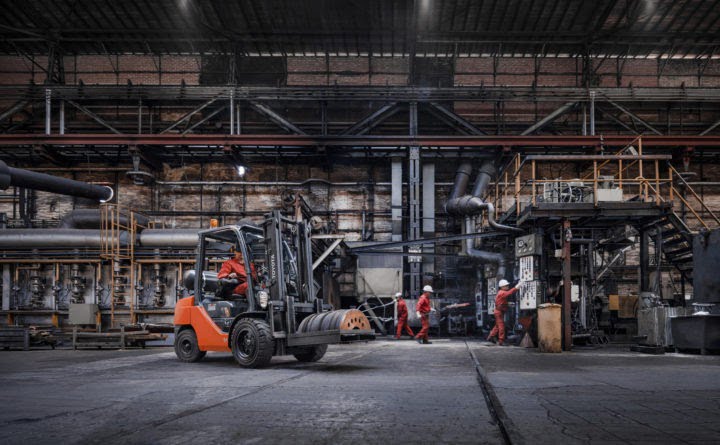
Today production and manufacturing have a solid relationship with research in AI, particularly the utilisation of mechanisation. Yet, for a long time, automation in manufacturing included large equipment and mechanical robots.
On account of advances in AI algorithms, robots have become more complex. They are presently driving a different connection between people. Truth be told, a different part of advanced mechanics, named “collaborative robots” or less complex “cobots” has arisen. The cobots work very close to individuals, lessening the number of tedious jobs.
Man-made brainpower helps workers by examining enormous volumes of information from sensor-loaded machines and expanding usefulness and effectiveness. A proportion of the effect of AI adoption on assembling comes from PwC estimates examination.
AI will add a 14% increment in worldwide home-grown products by 2030, which is around $15.7 trillion. To more readily see how AI partners can carry value to the assembling business we will inspect five genuine instances of AI incorporated systems applied in a plant.
MTorres – From Reduction of paper scraps to Vision Inspection in Aerospace
Today manufacturing has a strong association with AI, especially the use of automation. However, for many years, automation in manufacturing involved heavy machinery and industrial robots.
Thanks to advances in AI technology, robots have become more sophisticated. They are now leading a very different interaction between humans. In fact, a whole new branch of robotics, named “collaborative robots” or simpler “cobots” has emerged. The cobots work safely alongside people, reducing the number of repetitive roles.
Artificial intelligence assists workers by analysing large volumes of data from sensor-laden machines and increasing productivity and efficiency. A measure of the impact of AI on manufacturing comes from PwC forecasts analysis.
According to the consulting group, AI will contribute to a 14 percent increase in global domestic product by 2030. This will bring the the contribution to approx US$15.7 trillion. To better understand how AI can bring value to the manufacturing industry, we will examine five real cases of AI integrated systems applied in a factory.
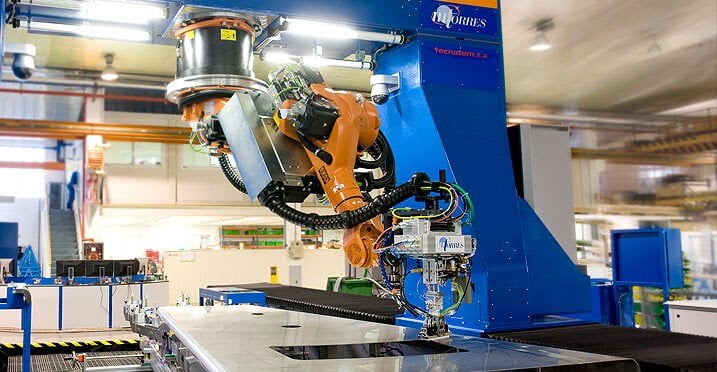
Manuel Torres’ long journey in manufacturing from the paper industry, to aerospace, and eventually to A.I. highlights how this transition to automated solutions can be undertaken, gaining opportunity from crisis. The entrepreneur started his career working for a paper company that during the 1973 oil crisis, faced with the skyrocketing of raw materials prices, including paper.
The problem
The company, like the entire industry, was struggling with the reduction of scrap amount. This caused a lot of waste and lost profits.
Thanks to his engineering background, Torres had the idea of automating the splicing of one massive roll of paper onto another by maintaining proper tension and melding them together. Ultimately, reducing the scrap to zero.
As the company refused to invest in his idea, he decided to go on his own. Torres founded the well-known MTorres in Pamplona, which sold splicers to major brands in the paper market.
About a decade later, the aerospace industry knocked on his door, asking for an innovative way to weave composite materials, like reels of carbon fiber together for airplane wings, fuselages, and tails. It turns out that the same technological insights required to maintain tension in the splicing of paper also apply to more complex materials like carbon fiber.
Next, many aerospace manufacturers such as Boeing, Airbus, and Embraer embraced its innovative idea. However, his march for innovation didn’t stop. On the contrary, it accelerated when he realised the potentiality of data analysis.
The AI solution
Thanks to an algorithm, and advanced Machine Learning techniques, Torres achieved greater efficiency. Therefore, he was able to flawlessly laminate carbon fiber onto an airplane wing at 60 meters per minute.
The automated Fibre Placement is now an integrated system capable of learning from error. It does this via a drill that uses visual recognition to perfect tens of thousands of holes per part, and an automated inspection module that scans the surface of carbon fiber in real-time looking for defects.
The benefit
This MTorres permits a drastically reducing scrap amount, in a field, aerospace, in which even the smallest defect can cause very serious damages.
Toyota Material Handling – AGV in a logistic Integrated Warehouse
Another example of the successful fusion of AI into an industrial factory to automate processes comes from Toyota Material Handling – the division of Toyota Industries Corporation focused on logistics.
The problem
All the back end tasks of logistics and supply chain management, when done manually, consume a lot of time and also cost a lot. On the contrary, automated warehouses have the propensity to manage inventory effectively as automated tasks tend to eliminate errors.
The AI solution
The company is currently reinventing its business by introducing small robots that swarm – hence their name “Swarm”, through the facilities and use visual recognition to navigate, carrying loads to the correct location. Indeed, they can:
- visually identify racks, pallets, and other infrastructure components,
- examine the image of a shelf of products,
- read barcodes
- pick up the right product to the right place on time.
Its inventor tested the autonomous guided vehicles movements in a realistic digital environment, which replicated the real warehouse to assure worker safety in a real-world scenario. Similarly, the training of the autonomous vehicles took place in the simulated environment.
As well as this, the vehicle is constantly learning and sharing its knowledge with other vehicles in a connected system. This is carried out under the surveillance of workers ultimately responsible for the coordination of all the operations.
The benefit
The accuracy this autonomous integrated system can achieve is remarkable in terms of productivity, leverage, efficiency and consequently in terms of ROI for the entire company.
ZF Group – pioneering in Smart Control Systems
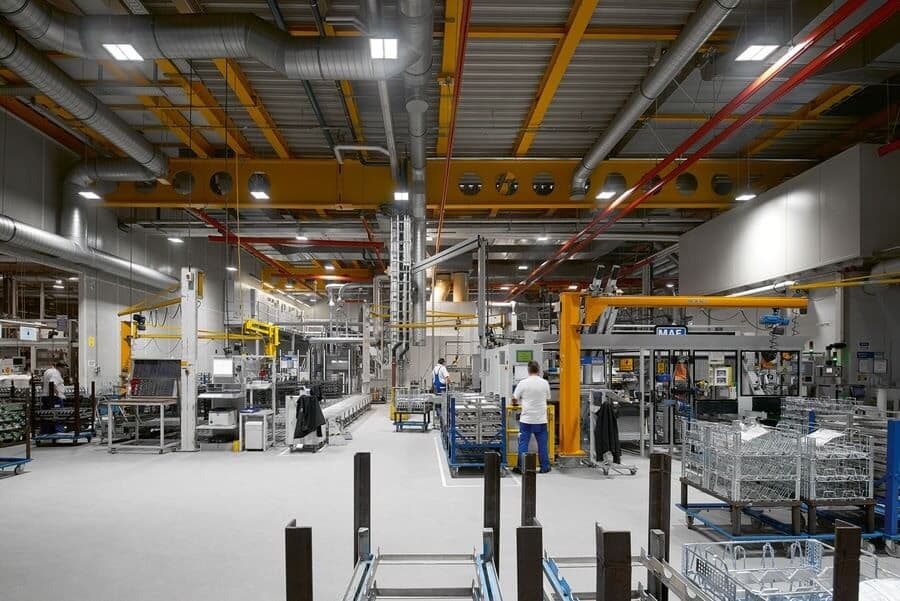
ZF Friedrichshafen AG, better known as ZF Group, is a German manufacturing company that operates principally in the automotive industry. They offer mechanical components and they are an electronic system supplier.
The ZF Group have a focus on four technology domains: Vehicle Motion Control, Integrated Safety, Automated Driving, and Electric Mobility. They are also specialised in pioneering data algorithms and technology to make their production line reliable and sustainable.
Georg Gabelmann, the Data Scientist who leads the IT Innovation Team at ZF, was interviewed by Microsoft about the new methodologies applied within the company. He said, “True AI is miscommunicated and misunderstood. Applied machine learning is AI, and data science is the key. If someone came to me and said we are doing AI, I would disagree. Our first step is machine learning.”
ZF don’t just implement their products with smart control systems and intelligent actuators to define the cars of the future. Instead, they continue company paths hand-in-hand towards process optimisation.
The problem
The quality of the processes achieved emerges in a situation. For example, a crucial tool on one of ZF’s lines is continually breaking and no one can figure out the cause to fix the problem.
The AI solution
The solution comes from a Machine Learning model trained to diagnose problems. By using sensors capturing quality data, overtime it automatically learns to better predict the expensive failures in the system.
Likewise, the company uses an intelligent assistant based on Reinforcement Learning to predict energy consumption, which contributes to reducing emissions; a widely shared value of sustainable ethics. Reinforcement Learning, an area of Machine Learning, is concerned with how smart agents ought to take actions in an environment in order to maximise the cumulative reward.
“AI will work in conjunction with us, getting rid of repetitive work,” Robert Copelan, Georg’s colleague, noted. “We strongly recommend not shutting down new tech initiatives, instead of trying to understand and take away the fear.”
Next, he was asked if he had advice for other manufacturers. Copelan replied: “Think big, but start small. You have to think about what it means to have it adopted across the entire enterprise.”
Tetra Pak – how to prevent failures in a packaging workflow
With a long history behind it, Tetra Pak, a Swedish-Swiss multinational food packaging and processing company, represents another case of innovative quality process revolution. Tetra Pak serves major food and beverage brands like Nestle, Tropicana, Coke, and Pepsi with the revolutionary technology of aseptic processing.
The AI solution
Overtime, the really interesting tech introduction remains the Predictive Maintenance system through Condition Monitoring. This allows engineers to predict failures before they happen, bringing food manufacturing closer to zero breakdowns.
By connecting packaging lines to a Cloud, Predictive Maintenance identifies deviations in machine functions that could lead to performance issues. Predictive Maintenance can also provide a system of alerts to activate timely, before every machine breakdowns.
The problem
This system reveals all its potential in the history case of one Tetra Pak client based in Argentina. A Buenos Aires dairy producer received a call predicting a future failure that would have caused a loss of a great number of milk litres. The consequences of not predicting a failure are far-reaching as Argentina has strong import restrictions.
Thus, replacement parts from nearby countries would have meant time delays up to 96 hours. And a cow that typically produces 24 liters of milk daily, cannot just be switched off. If multiplied for the entire herd we have a measure of the financial disaster. Fortunately, the catastrophe has been avoided just thanks to a call activated by the predictive system.
The benefit
The real-time analysis of operational performance data that Tetra Pack’s Condition Monitoring offers, helps to intervene timely and effectively, more than was previously possible.
In 2016 for example, when more than 5000 filling machine lines around the world were already connected, downtime was eliminated by up to 48 hours for each line, saving up to 30,000 Euros for the customers.
Colfax – connected welder to predict industrial issues
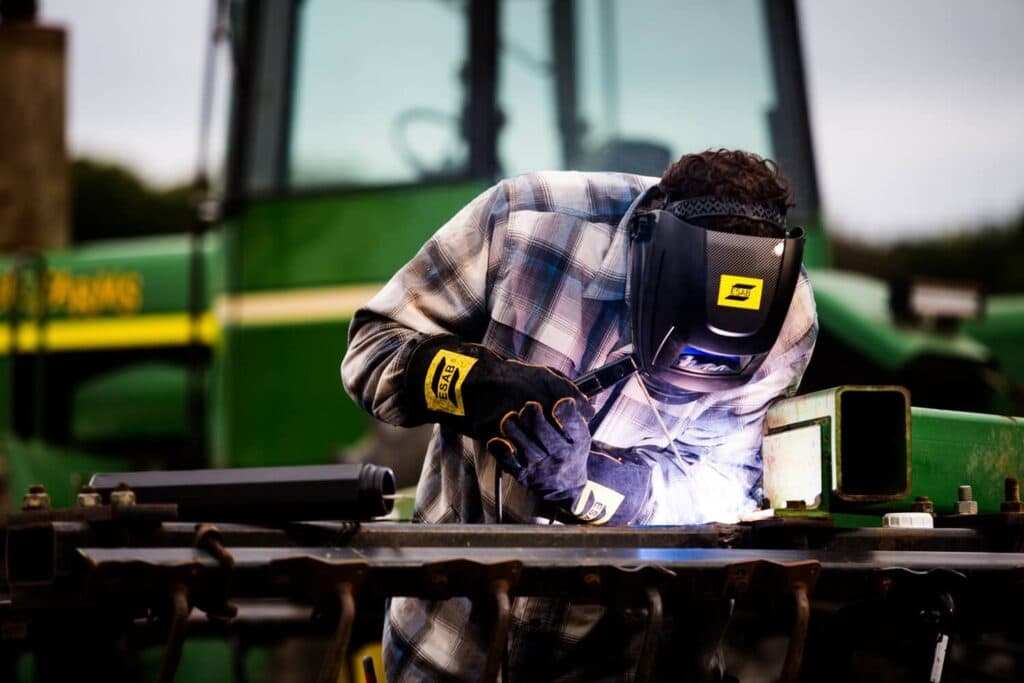
Colfax provides another case in point of getting operational efficiencies and improving productivity. The Annapolis Junction Company has expertise in welding and pumps. They have become a multi-platform diversified industrial company serving hundreds of global industries.
Colfax, for years, has been deploying a data-driven strategy for all its subsidiaries. Wherever their locations are based, they create an aligned integrated and connected system.
The problem
The case we focus on is about Colfax’s ESAB subsidiary. The company had the idea of creating “a connected welder system”. It was very difficult to be able to identify when customers were running into issues.
However, once every welder connects to a platform that controls them through data-flow analysis, only then was the platform able to provide valuable insights about quality. Efficiency and use of material were also improved and so were alerts to potential chain issues.
The solution
Rebel EMP 215ic, CC/CV welding system, provides a true multi-process performance and a groundbreaking operator interface with LCD/TFT display. Operators interact with it using a unique control that combines traditional weld parameter adjustments with the smartphones.
In fact, the color display offers a simple interface in 21 languages. Important information beyond weld parameters are displayed on the users interface.
Moreover, the Rebel’s sMIG (“smart MIG”) function adapts automatically the welding to any popular steel, stainless, chrome-moly or aluminum filler metal/gas combination, and provides a stable MIG arc. As users adjust one parameter, sMIG automatically adjusts others to keep the MIG arc stable.
For instance, increasing or decreasing wire feed speed to weld thicker or thinner metal. Using an exclusive, built-in algorithm, sMIG monitors the operator’s technique and continuously adapts the output.
The benefit
Experienced welders become productive more quickly in their manufacturing, and novice welders start producing quality welds in less time. The sMIG feature takes away incorrect settings and so users can focus on good gun technique. As a result, ESAB can improve job costing and quality for their customers.
Final Thoughts
These stories highlight what realising tech intensity is all about – especially in the manufacturing industry. They also remind us that people are at the heart of this transformation.
Through the use of AI, operators are empowered with more knowledge about the baseline throughput and quality. This provides them with real-time recommendations on how to guide performance levels towards optimisation.
Want to learn more about how your organisation can implement your machine learning project? Try our free tool: The periodic table of Deep Learning Elements.


